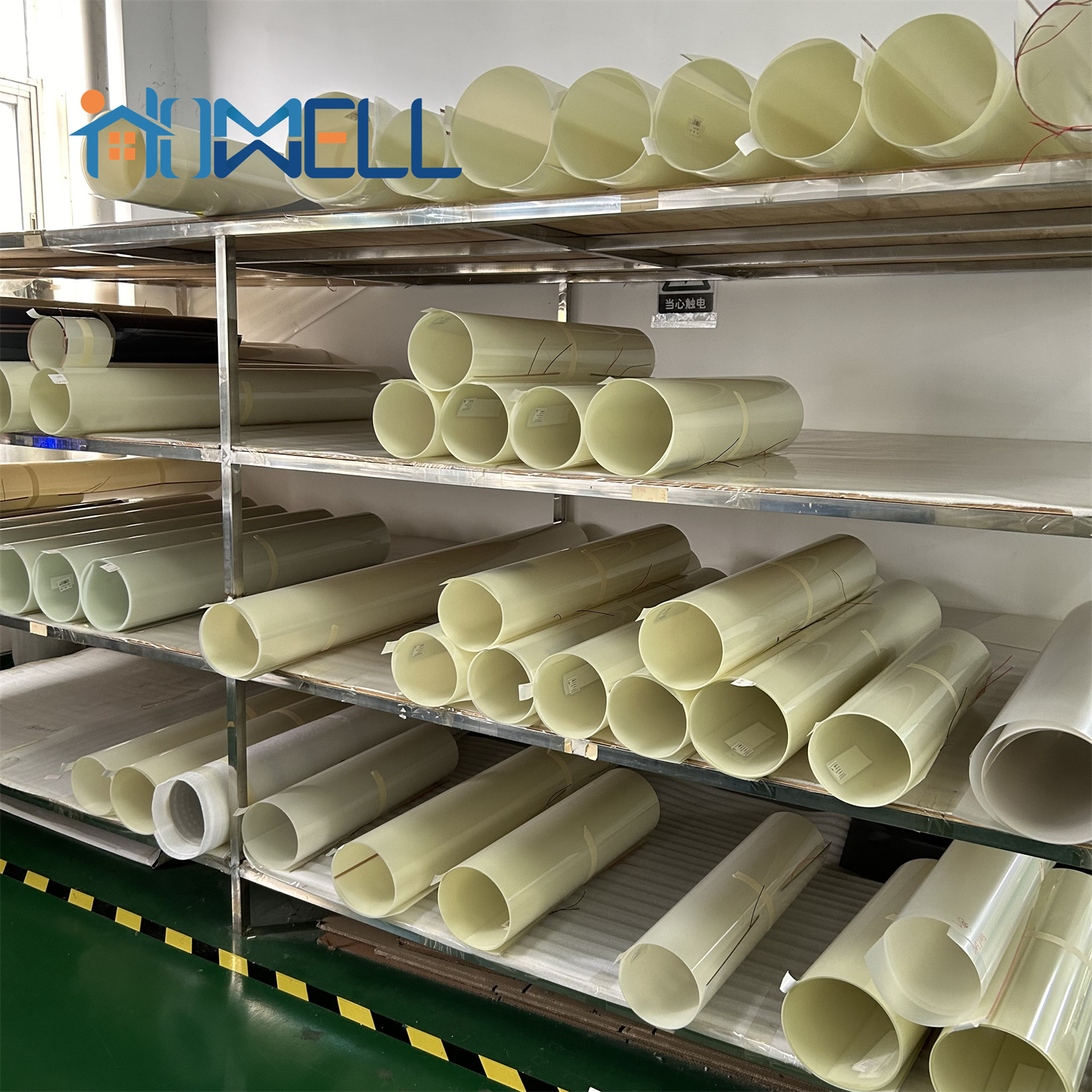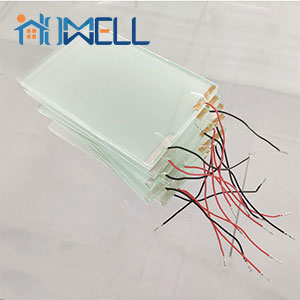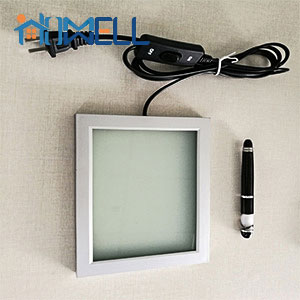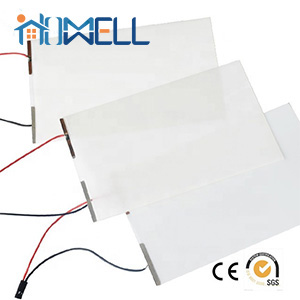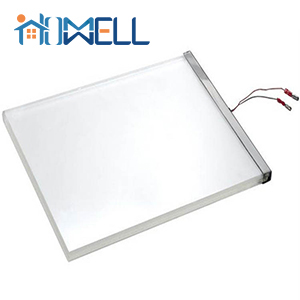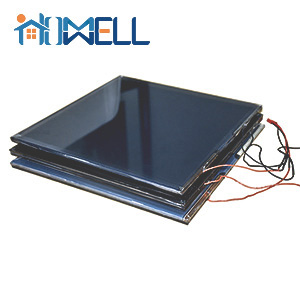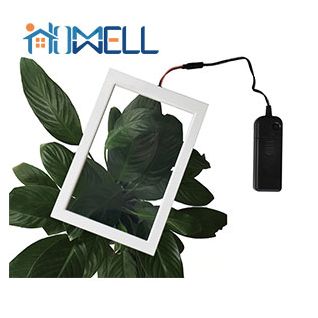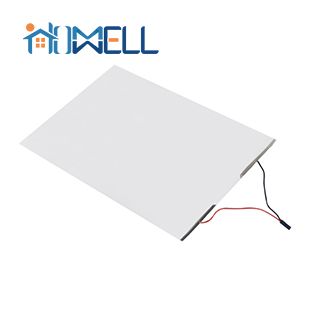PRODUCT
PDLC (Polymer Dispersed Liquid Crystal) Glass is a kindly laminated glass, which can change to be transparent or opaque instant by switching the electricity power by means applying with PDLC film. When power off, coming visible light scatters through the PDLC, and the film turns translucent;When power on, coming visible light transmits the PDLC and the Film turns clear.
2. Perfect function of safety. As smart glass is a special kind of laminated glass, it has all the good function of the laminated glass, mainly the security.
3. Blocks more than 99% UV rays ,avoiding fading in the room.
4. Sound proof. With excellent damping action, the smart glass is easy to block the noise.
5.Projection. When it is under suitable light, the perfect projection appears.
6.No trouble of curtain setting and cleaning.
7.With a modern looking, very good for interior design.
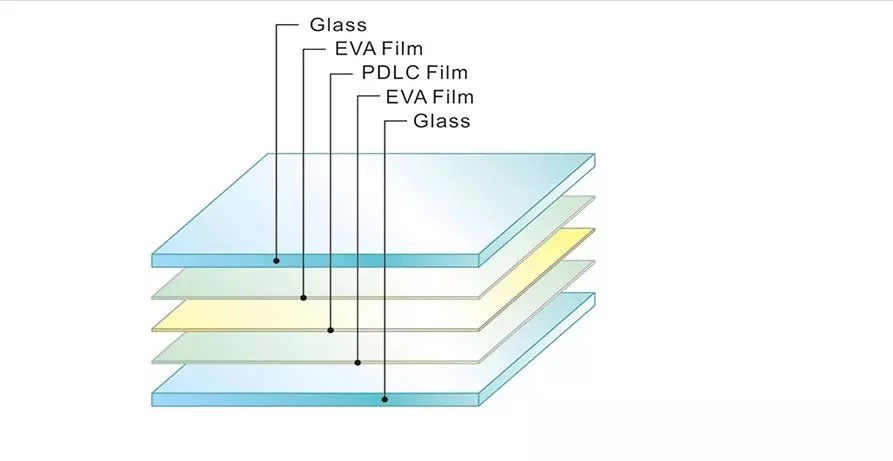
Product Function
1) Privacy Protection :
The biggest function of Our pdlc film is privacy protection,which can control the glass between transparent and opaque.It can protect your privacy by our smart film
2) Projection Screem:
Our Pdlc film can be used as a good projection screen, in appropriate light environment, if choose high lumen projector, the image of projection effect is very clear(suggest use rear projection mode).
3) Safety Protection
Our pdlc film thickness is about 0.36mm. When installed on your glass window,It can adhensive your window closely, When the window are broken, The film can avoid the window glass flying around and hurt others,
4) Environmental Protection:
Our PDLC film attached on the surface of glass,Which can resist heat over 98% UV and over 95% infrared ray. In order to reduce thermal radiation, it requires shielding partial infrared ray. While if shielding UV can protect indoor furnishings not fade, aging and so on, and protect people against the disease by ultraviolet radiation.
|
Photoelectric Performance PNLC Smart Film |
||
|
|
||
|
Items |
ON/OFF |
Test Methods/Standards |
|
Operating voltage |
ON 60V |
Multimeter/ Voltage Regulator,WGW |
|
Power consumption |
ON avg 4-6W/m² |
Multi-parameter electric measuring instrument |
|
Viewing angle |
OFF 160°+1° |
Visual Inspection |
|
Uv blocking rate |
ON ≥ 85% |
Optical transmittance tester |
|
Infrared blocking rate |
ON ≥ 60% |
|
|
Response time |
ON ≤ 200ms |
Liquid crystal parameter |
|
|
OFF ≤ 220ms |
|
|
Operating temperature |
-- -20°C ~ 85°C |
constant temperature and humidity testing machine |
|
Lifetime |
-- 10 -15 years |
GB18910.5-2008 |
|
Switching times |
-- ≥2 million times |
Self-made on/off tester |
|
PNLC smart film is driven by AC power, fogged and translucent when power is added, colorless and transparent when |
||
(1) Opaque statue of STG
STG is composed of two transparent ITO film sandwiched between a layer of plastic and liquid crystal. The plastic and liquid crystal include a liquid crystal ball and a polymer, and the liquid molecule director is approximately parallel to the glass substrate , the polymer is surrounded by the liquid crystal micro droplet, the refractive index of the polymer is np , which is similar to the refractive index of the glass. Approximately 1.5 , an is isotropic substance, the unusual refractive index and the ordinary refractive index of liquid crystals are ne and n, respectively. When the vertically incident visible light passes through the glass and transparent ITO film ,it enters the liquid crystal sphere and the
polymer interface, due to ne is not equal to ne , So scattering occurs and the STG is atomized.
(2) Transparent STG
When the external electric field is applied, the electric field is formed between the two transparent ITO films, and the liquid crystal molecules are arranged in the direction of the electric field. When the vertically incident visible light passes through the glass and the transparent ITO film, it is incident to the interface between the liquid crystal sphere and the polymer. Because the no direction is perpendicular to the direction of light propagation and no is equal to np, the glass is transparent.
(3) STG haze
The main indicator of the advantages and disadvantages of STG glass optical performance is transparency. In fact, it is the haze. The smaller thaze when energized, the better haze when the power is cut off. When the external electric field is applied, the light is perpendicular to the direction of the transparent conductive film. When incident, although nLC is approximately equal to no, However, due to the difference between the nP and no values, scattering still occurs at the interface between liquid crystal droplets and polymers. This is the main reason for the haze.
(4) View angle
When the ITO film is power on, Angle between incident light and the vertical direction of the electric control film is not zero(Called the view angle “a”) The direction of light propagation in the STF is not parallel to the liquid crystal molecule pointing vector, as shown in the figure:
